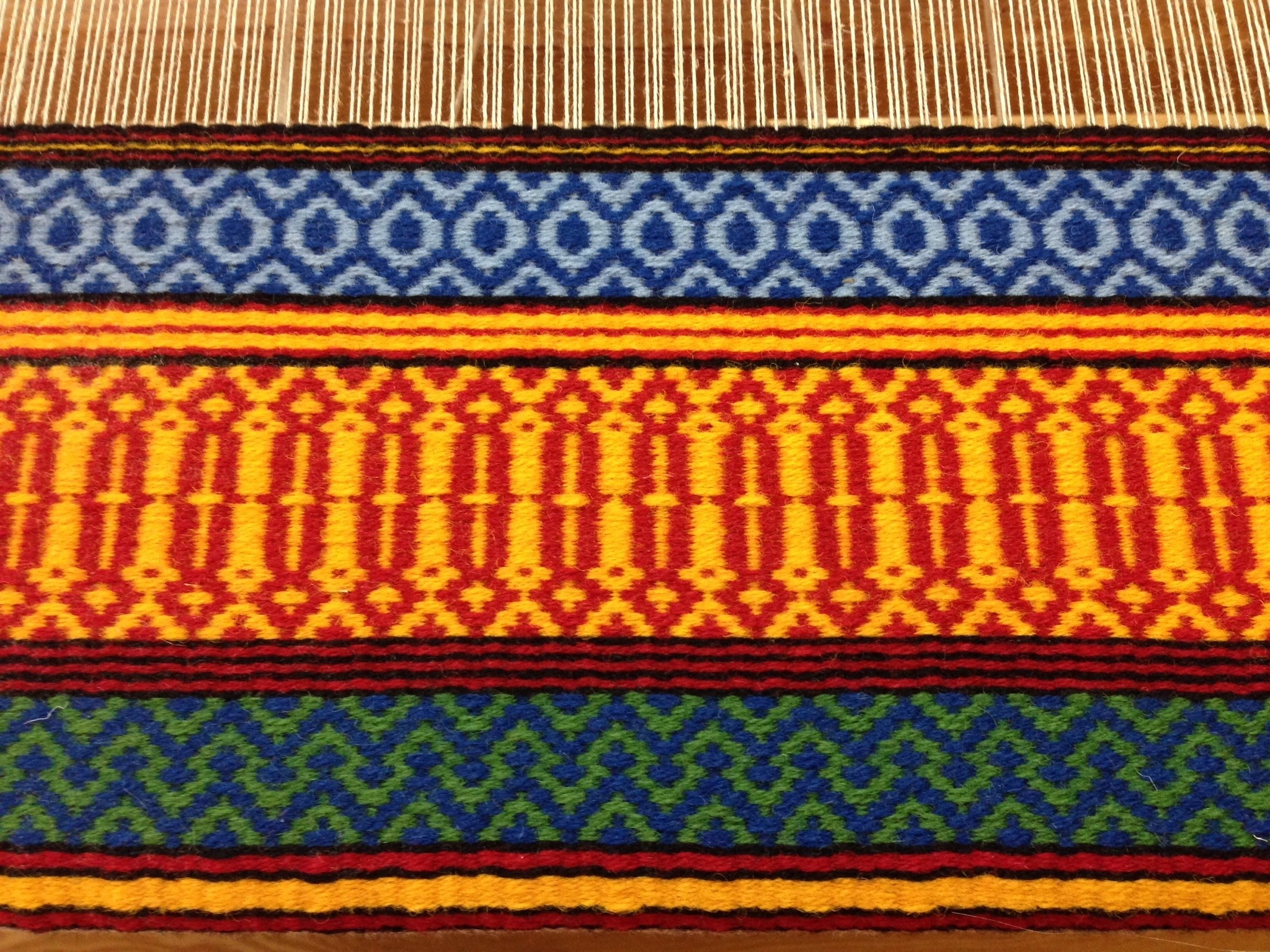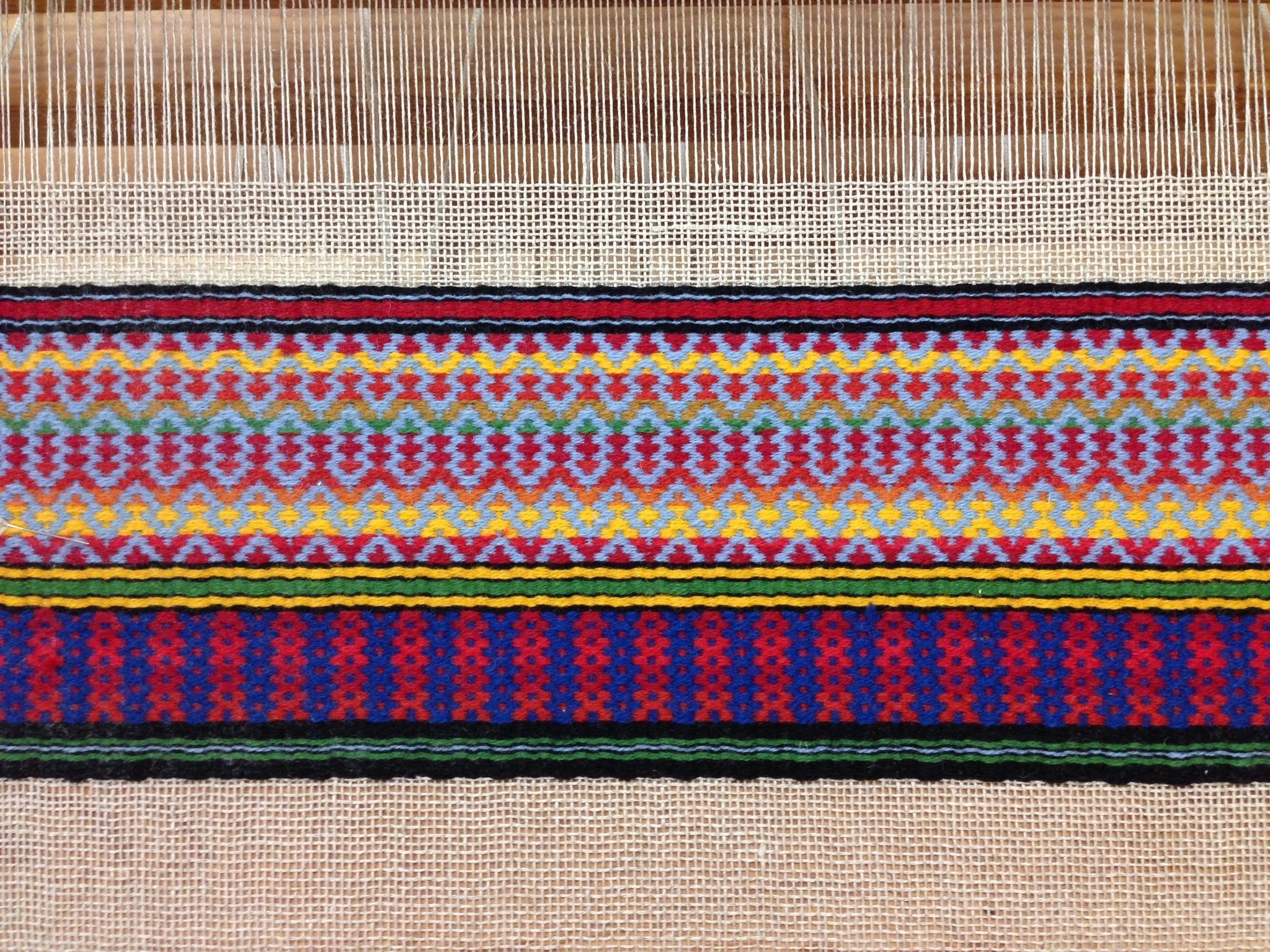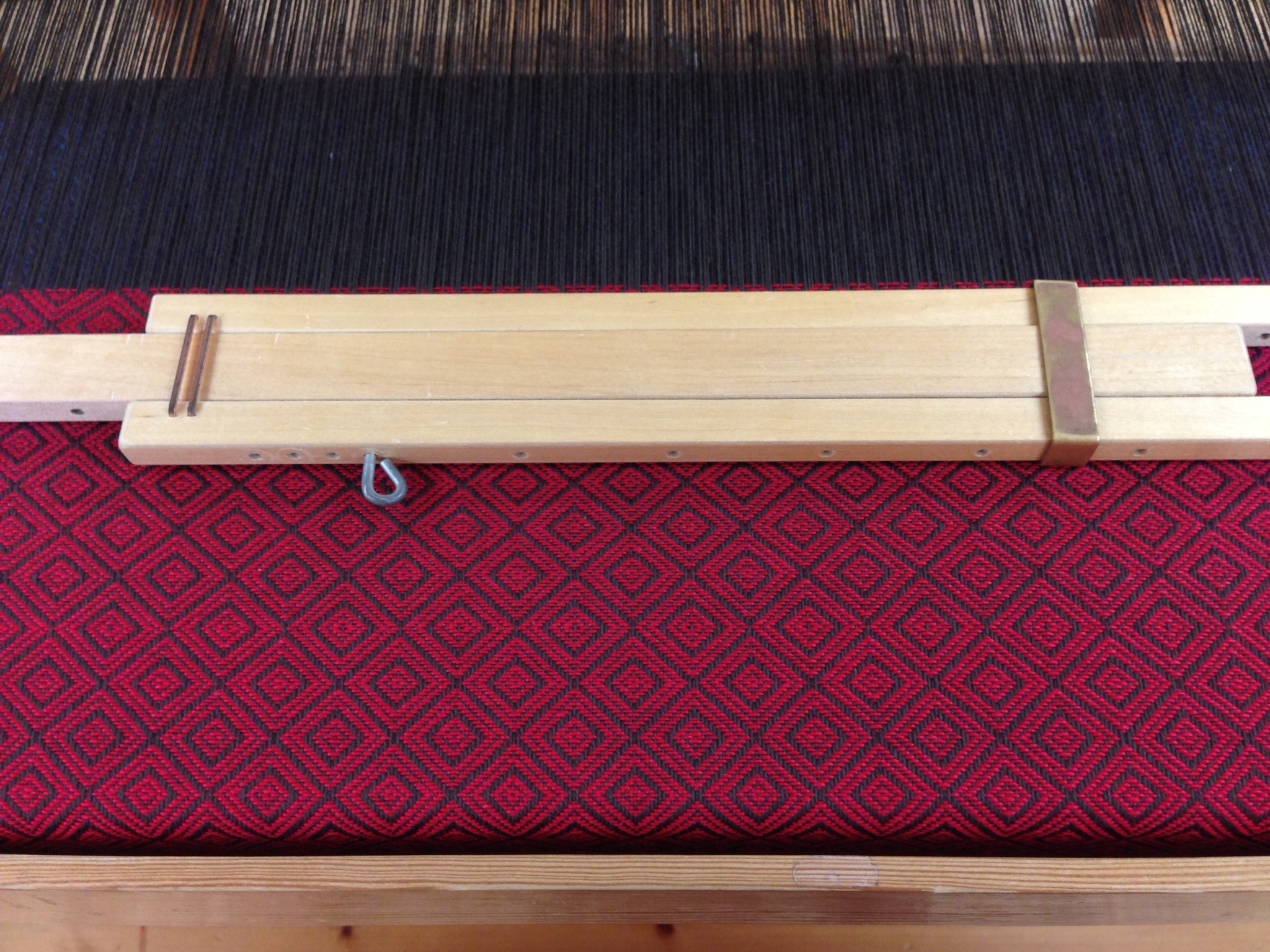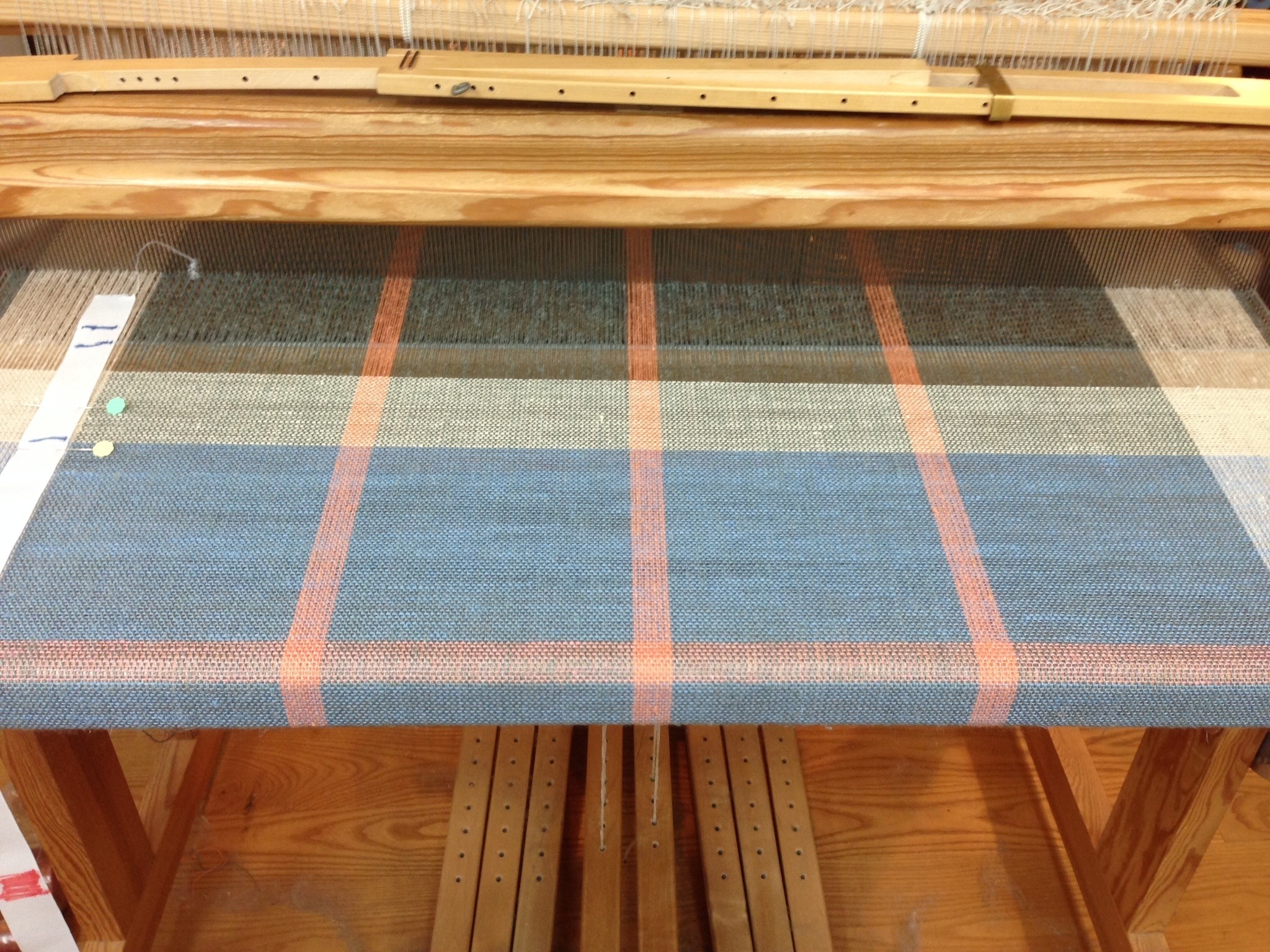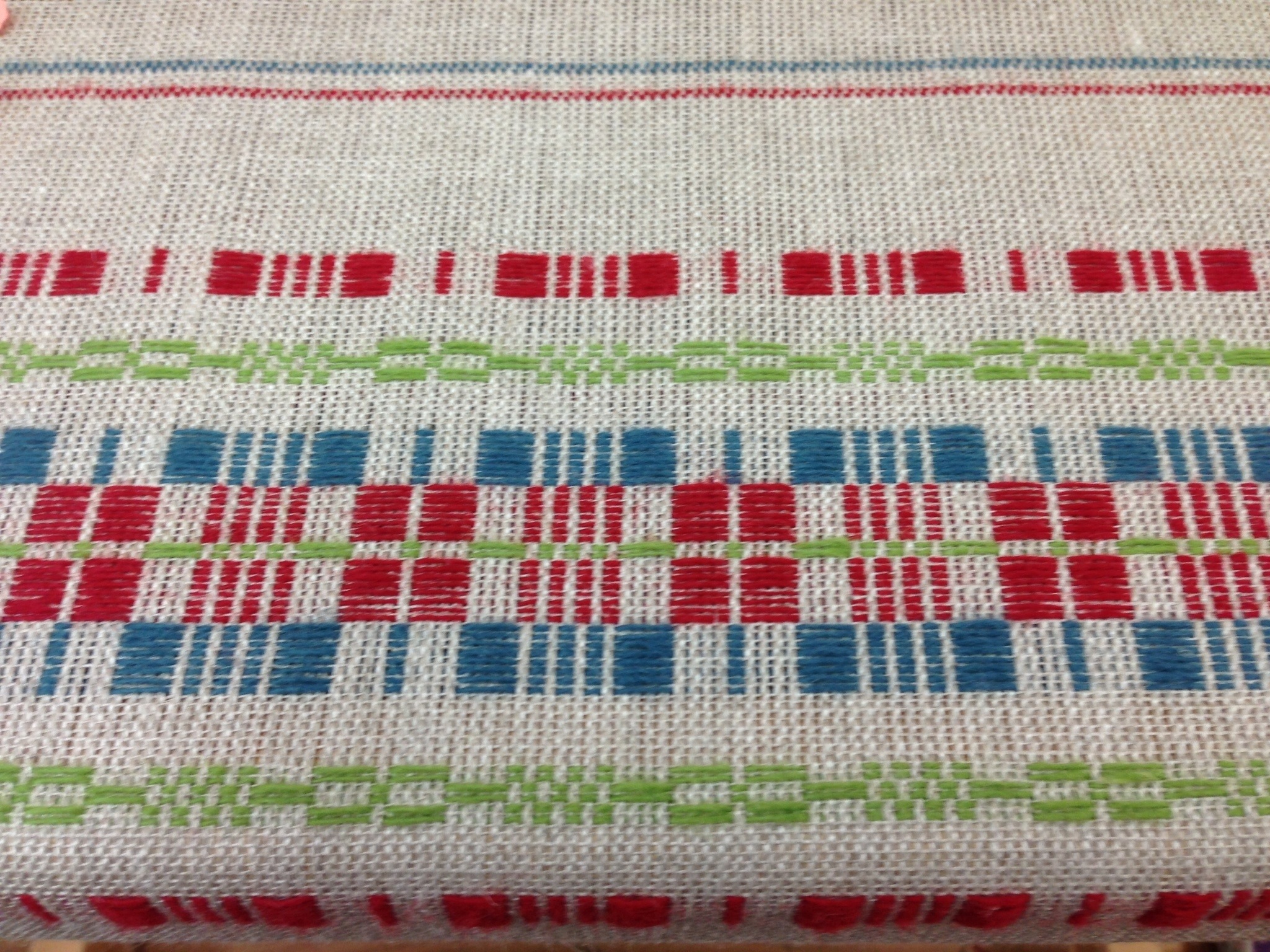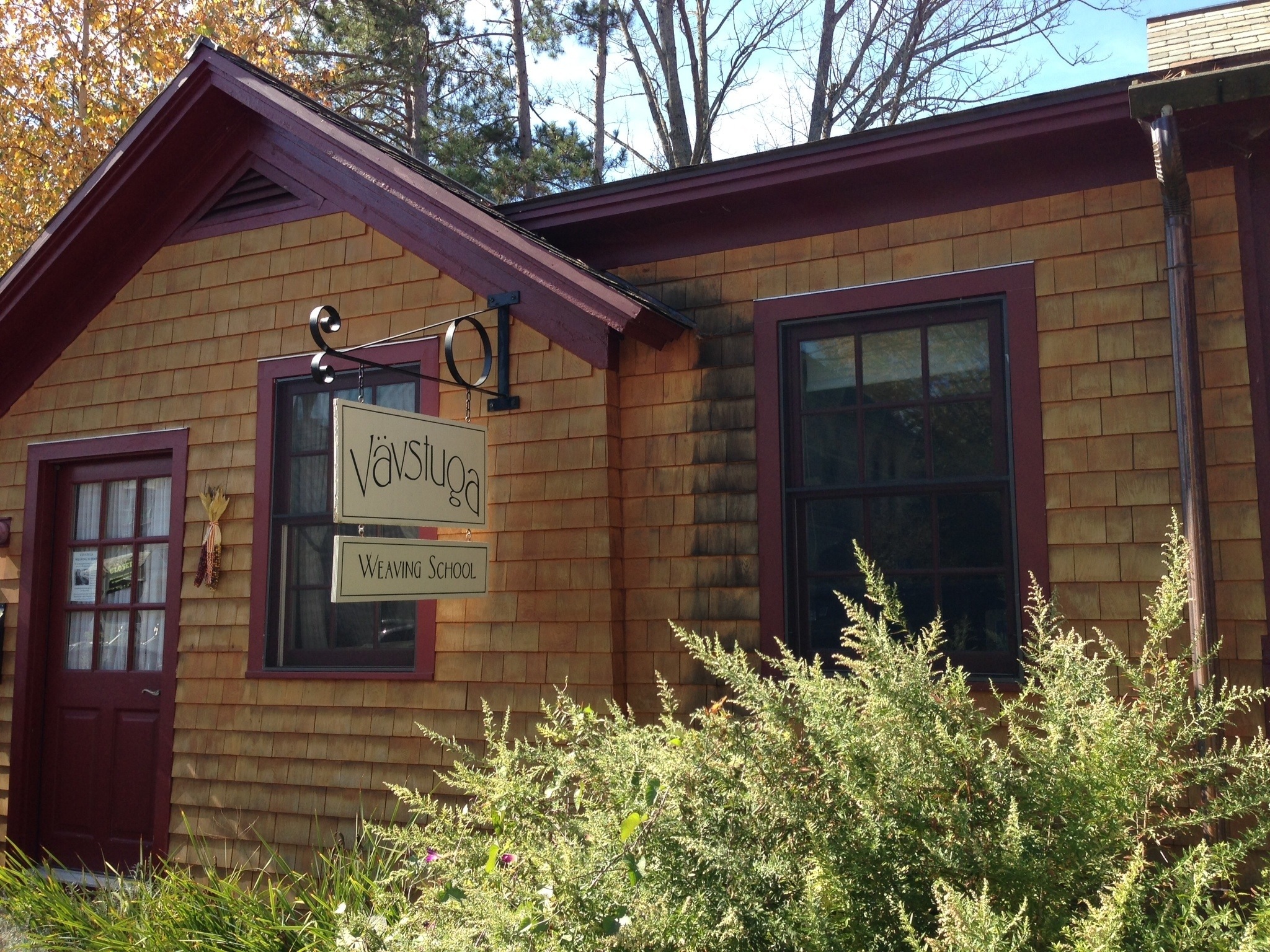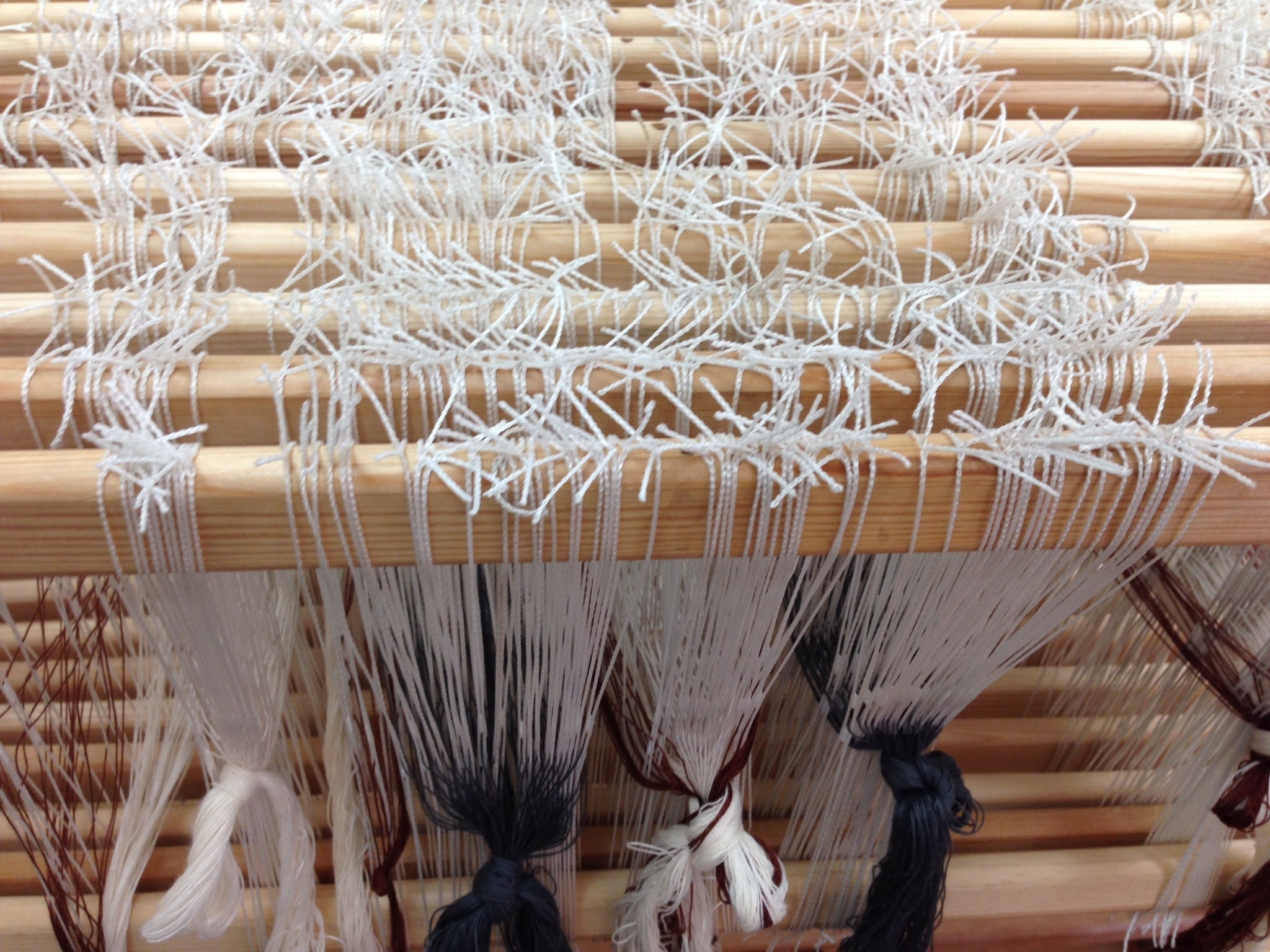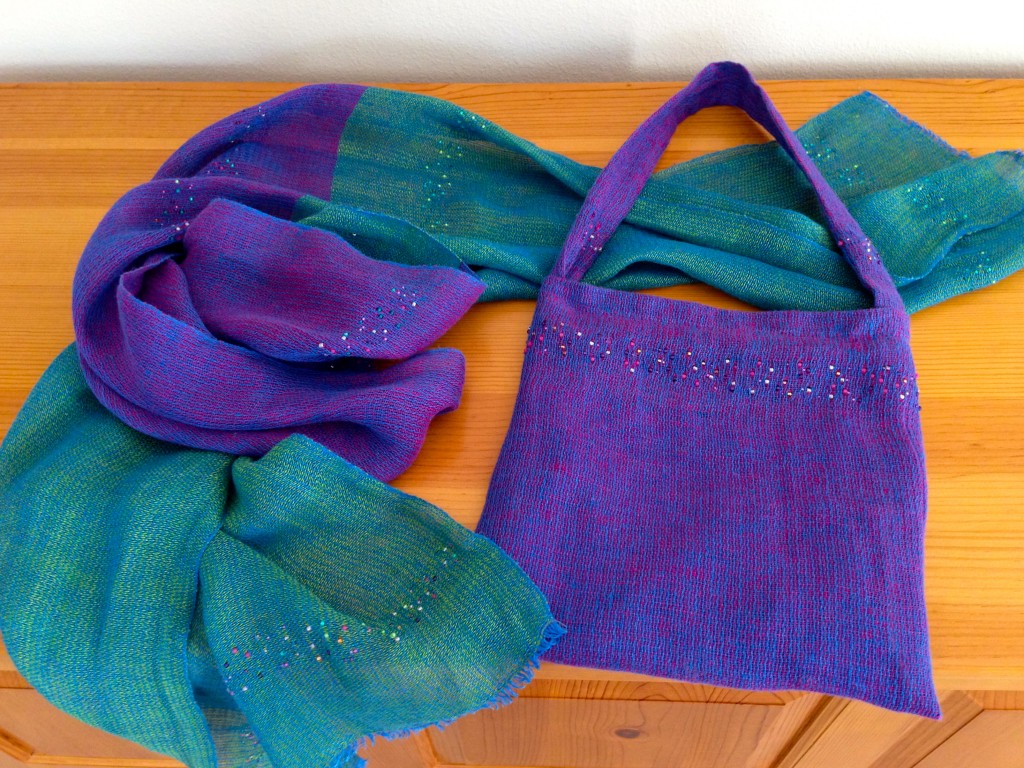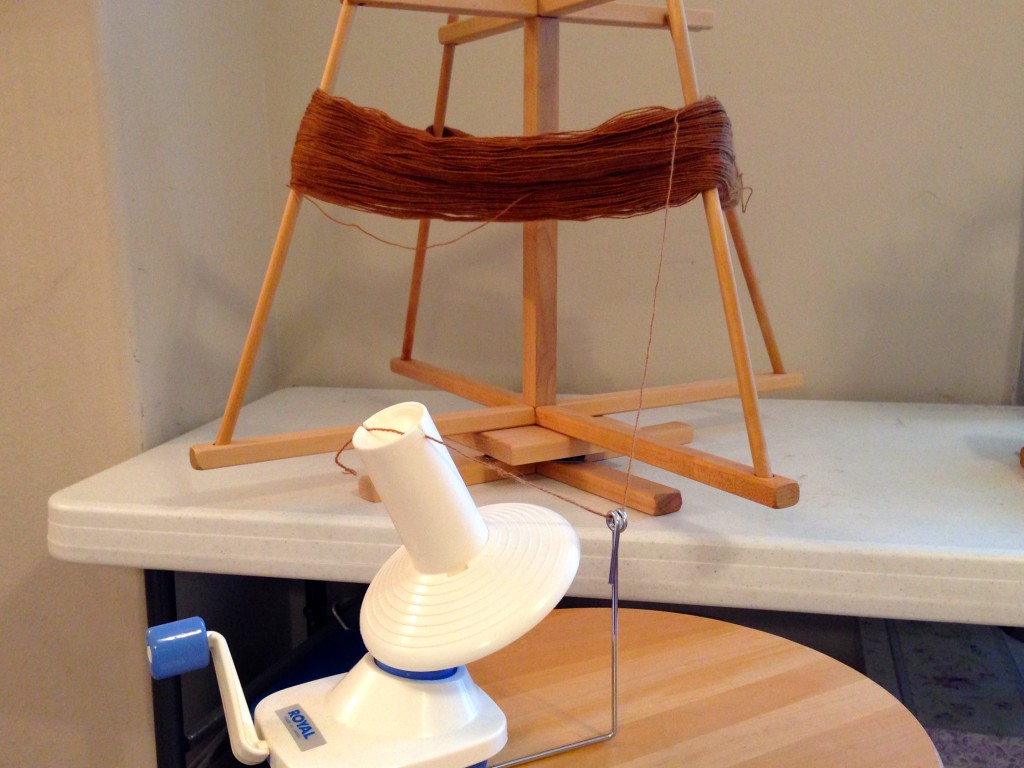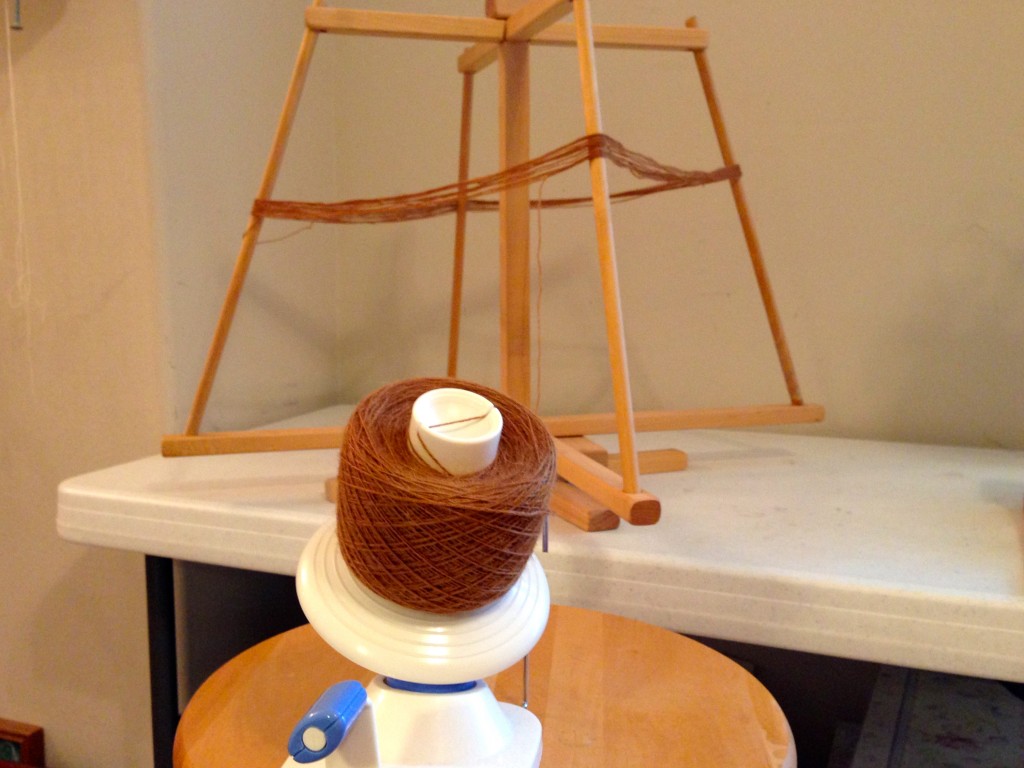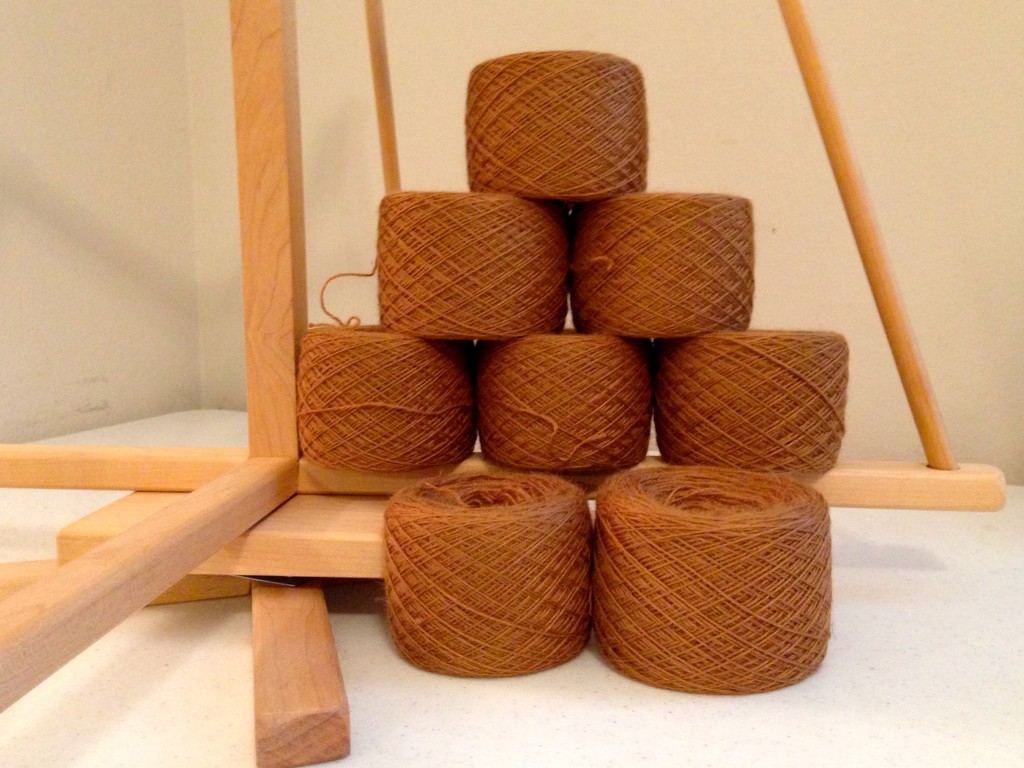This Swedish rosepath is a weft-faced structure, which means the warp is covered by the weft. (To see more of what I wove during my week at Vävstuga Classics, click HERE and HERE.) Yes, you can see this linen warp preceding and following the woven wool weft, but if you look at just the patterned area, the warp is not visible. The treadling is simple (weaving on opposites); and because of many possibilities with pattern and color, designing at the loom is incredibly fun! Do you ever think about the warp that lies under the pattern and color of your life?
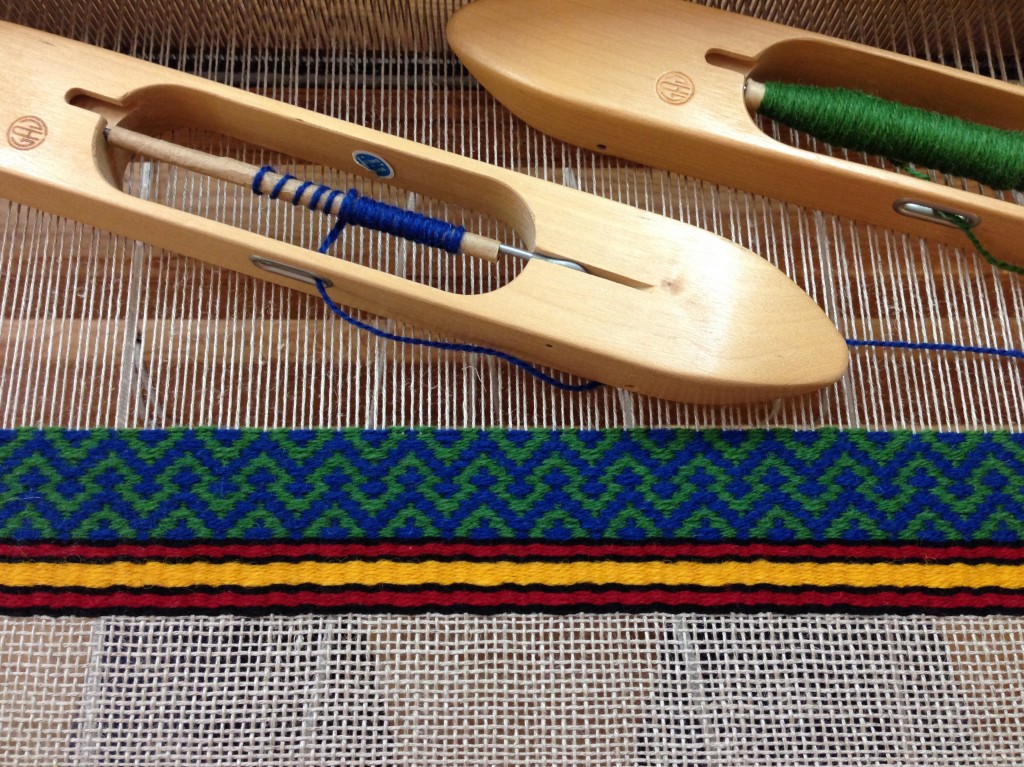
At times I find myself so involved in my day-to-day activities that I only think about what needs to get done, forgetting the unseen warp that provides the inner strength I need.
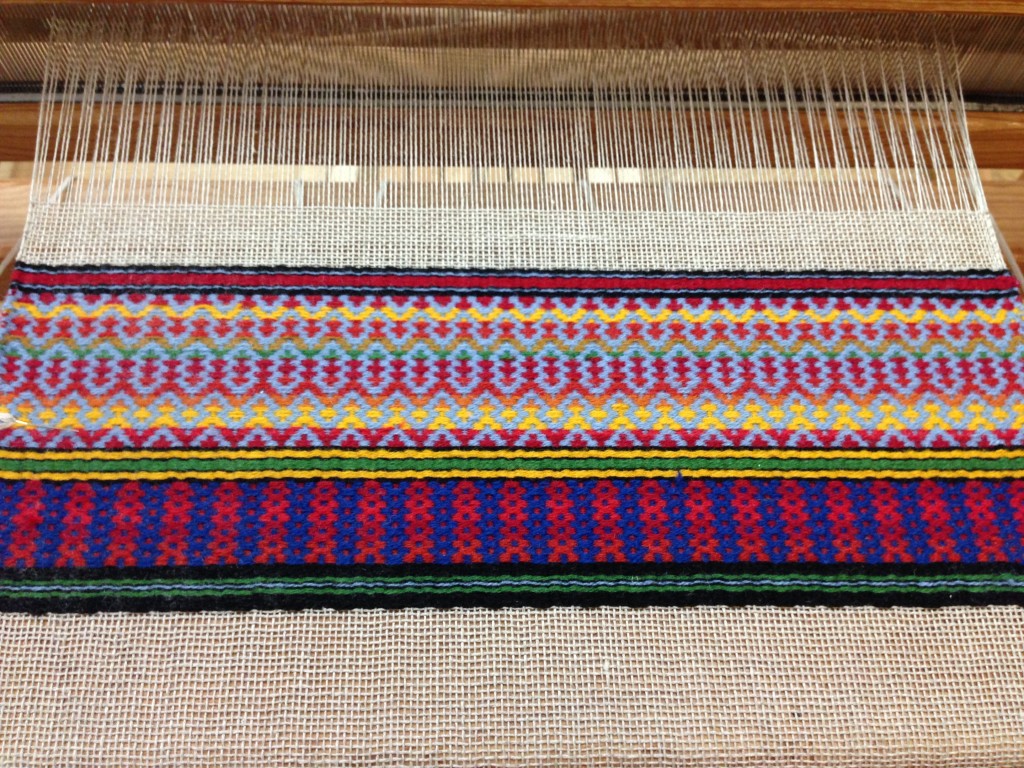
Our creator’s goodness is so constant we can overlook it, forgetting how much we need his goodness to sustain our lives. And it is his unending love that gives meaning and stability to the overlaying patterns and colors that form our days. You do not have to see the warp with your eyes to know it is hidden within the beautiful rosepath weaving. The scenic autumn New England countryside that I enjoyed last week is the creator’s rosepath on display!
(Next week: You don’t want to miss my exclusive conversation with Becky Ashenden, the delightful master weaver of Vävstuga.)
May you discover hidden things worth discovering.
Having fun with rosepath,
Karen

